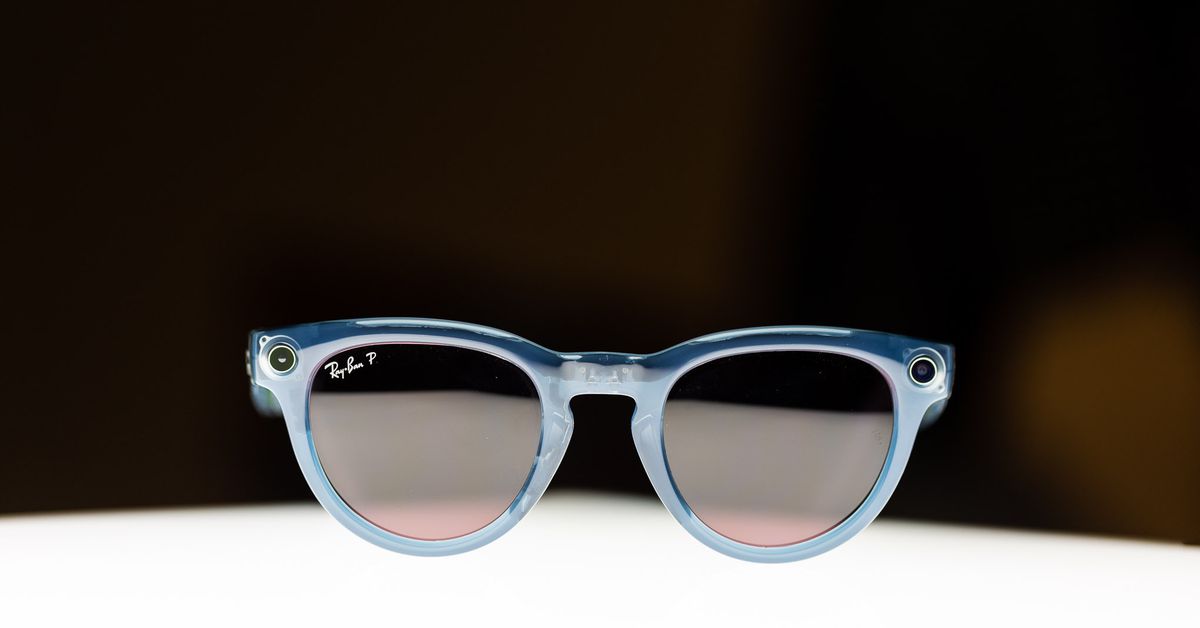Unveiling the Potential: Are Meta’s Smart Glasses the Future of AI Integration?
Meta’s smart glasses have captured the attention of tech enthusiasts and professionals alike, igniting discussions about their potential role in the evolving landscape of artificial intelligence (AI). As we stand at the intersection of augmented reality (AR) and AI, these innovative devices promise to redefine how we interact with technology. But the question remains: are they a revolutionary tool that will lead us into a new era of AI integration, or are they simply an intriguing concept lacking a clear purpose?
The Vision Behind Meta’s Smart Glasses
Meta, formerly known as Facebook, has been on a quest to create a more interconnected world through technology. Their smart glasses represent a significant leap forward in this journey. Designed in collaboration with Ray-Ban, these glasses merge stylish aesthetics with cutting-edge technology, offering a glimpse into a future where digital information overlays our physical reality.
With features such as built-in cameras, voice commands, and connectivity to smartphones, Meta’s smart glasses aim to provide an intuitive experience. Users can capture photos and videos, listen to music, and access notifications, all while maintaining a hands-free approach. This integration of AI capabilities promises to enhance daily activities, making them more efficient and engaging.
AI Integration: A Game Changer?
The true potential of Meta’s smart glasses lies in their capability to integrate AI seamlessly into our everyday lives. Here are some ways in which AI can enhance the functionality of smart glasses:
- Real-Time Translation: Imagine wearing glasses that can translate spoken language in real time, allowing for effortless communication across language barriers.
- Augmented Navigation: AI-powered navigation can provide step-by-step directions overlayed on the real world, guiding users without the need to look at a phone.
- Personalized Recommendations: By analyzing user behavior, AI can suggest nearby restaurants, events, or points of interest, enhancing the exploration experience.
- Health Monitoring: Future iterations could integrate health tracking features that monitor vital signs and provide alerts, promoting wellness on the go.
These capabilities could transform how we perceive and interact with our surroundings, making the smart glasses not just a novelty but an essential tool in our daily lives.
The Challenges Ahead
Despite the exciting possibilities, several challenges must be addressed before Meta’s smart glasses can achieve widespread adoption as a practical AI tool. Here are some of the key concerns:
- Privacy Issues: The built-in cameras raise significant privacy concerns. Users and bystanders alike may feel uneasy knowing that their images and actions could be captured without consent.
- Battery Life: Integrating powerful AI features requires substantial energy. Ensuring that the glasses can operate effectively for extended periods remains a technical hurdle.
- User Experience: The glasses must be intuitive and user-friendly. Complicated interfaces could deter potential users, limiting the technology’s appeal.
- Cost Accessibility: The price point of such advanced technology must be suitable for a broader audience to ensure that it doesn’t remain a luxury item.
Addressing these challenges will be crucial for Meta to position its smart glasses as a leading tool in AI integration.
Comparative Landscape: Meta vs. Competitors
Meta isn’t the only player in the smart glasses arena. Companies like Google and Apple are also making strides in this space. Google’s Project Glass and Apple’s rumored AR glasses have sparked interest and competition. Comparing these technologies can highlight Meta’s unique approach:
- Google’s Approach: Google’s Glass Enterprise Edition focuses on workplace applications, enhancing productivity in industries like manufacturing and healthcare.
- Apple’s Vision: Apple is rumored to be developing AR glasses that will integrate with its ecosystem, emphasizing a seamless user experience across devices.
Meta’s smart glasses, with their emphasis on social connectivity and lifestyle applications, may carve out a niche that differentiates them from these competing technologies.
The Future of AI Integration with Meta’s Smart Glasses
Looking ahead, the potential for Meta’s smart glasses to serve as a platform for AI integration is immense. The technology landscape is evolving rapidly, and the demand for innovative tools that enhance convenience and connectivity is growing. Here are some predictions regarding the future of AI integration with Meta’s smart glasses:
- Enhanced AI Algorithms: As machine learning advances, the glasses will likely utilize more sophisticated algorithms for better personalization and functionality.
- Integration with Smart Homes: Expect future iterations to connect seamlessly with smart home devices, allowing users to control their environment through voice commands.
- Community Engagement: Meta could develop platforms that allow users to share experiences and content directly through their glasses, fostering a sense of community.
- Educational Applications: The educational sector could benefit significantly from AR-enhanced learning experiences, making learning more interactive and engaging.
As these advancements unfold, the glasses could transition from a tech novelty to a must-have tool in various sectors, including education, healthcare, and entertainment.
Conclusion: A Revolutionary Tool or an Intriguing Concept?
In conclusion, Meta’s smart glasses have the potential to be more than just an intriguing concept; they could represent a significant leap in AI integration. While challenges remain, the technology is poised to reshape our interactions with the digital world and redefine our daily experiences. As we embrace the future of AI, the question isn’t whether Meta’s smart glasses will change the landscape but rather how quickly they will evolve to meet the demands of a tech-savvy society.
Ultimately, the success of Meta’s smart glasses will depend on their ability to address privacy concerns, enhance user experience, and deliver practical applications that resonate with users. If they can do this, we may very well be witnessing the dawn of a new era in technology—one where our digital and physical realities blend seamlessly, making the world around us even more connected and interactive.
See more Future Tech Daily

